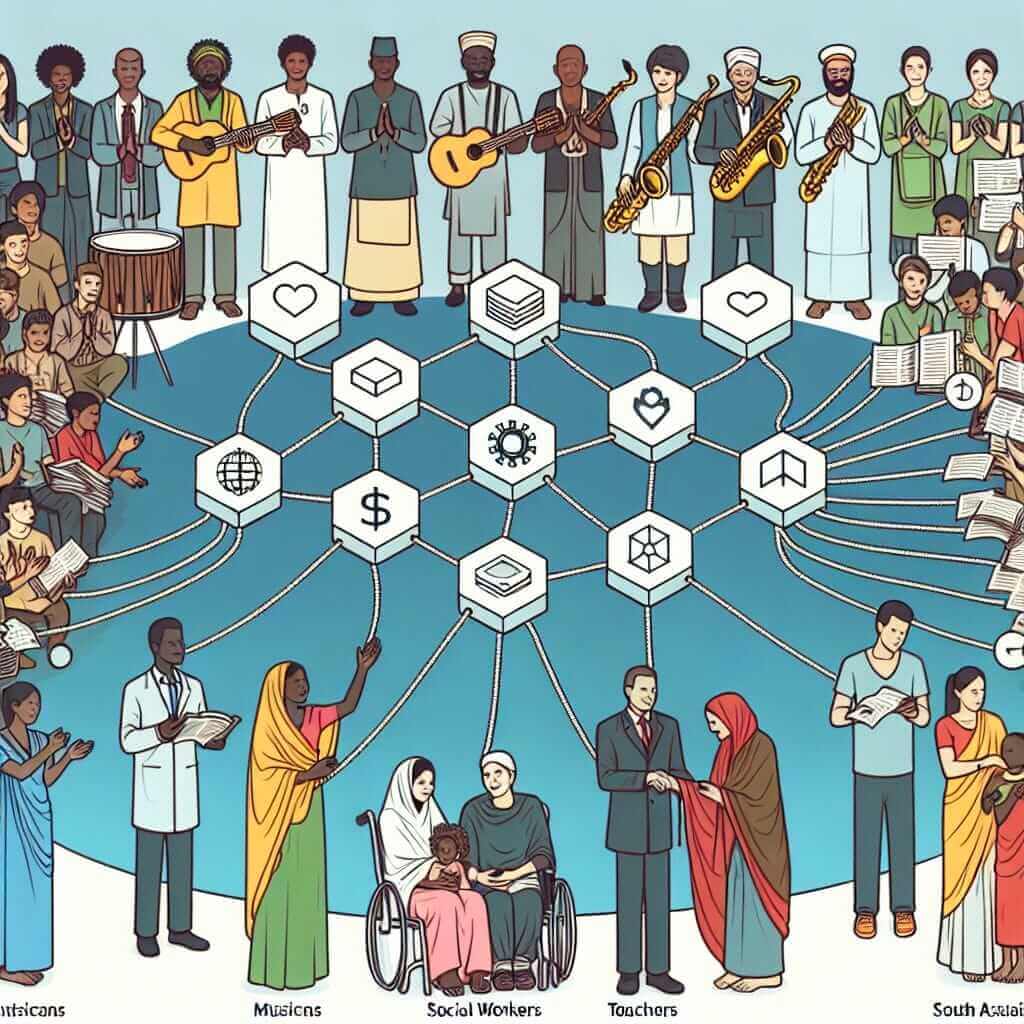The IELTS Reading exam is a challenging component of the IELTS test, requiring skills in comprehension, inference, and critical thinking. One recurring theme in recent tests is the application of advanced technologies in humanitarian efforts. Among such technologies, blockchain has garnered significant interest. This article provides a detailed reading practice on the topic “How is blockchain technology being used in humanitarian aid efforts?” It will feature a realistic IELTS reading passage, questions, answers, and a rich vocabulary and grammar section.
The Reading Passage
Blockchain and Humanitarian Aid: A Match Made in Heaven?
Blockchain technology, a decentralized digital ledger system, has been making waves across various sectors for its potential to enhance transparency and security. In recent years, humanitarian organizations have started to explore its utility in disaster relief efforts and aid distribution. Here’s how:
How Blockchain Enhances Transparency
Transparency is pivotal in humanitarian aid to ensure resources are used effectively. Traditional systems are often plagued by inefficiencies and corruption. Blockchain offers a solution by providing a transparent and immutable record of transactions. Every transaction is traceable, making it difficult to misappropriate funds.
Improved Fund Distribution
One of the significant applications of blockchain in humanitarian aid is in fund distribution. Donors can track their contributions until they reach the intended recipients. Smart contracts, self-executing contracts with the terms of the agreement directly written into code, ensure that funds are released only when certain conditions are met. This method ensures that aid reaches those in need promptly and reduces administrative costs.
Real-Time Tracking
The ability to track goods and services in real-time is another advantage of using blockchain in humanitarian efforts. From the moment aid is dispatched to its delivery, all stages can be monitored transparently. This supply chain visibility helps in managing resources more efficiently and responding to crises faster.
Case Studies in Blockchain Humanitarian Aid
Several pilot projects have demonstrated the effectiveness of blockchain technology in humanitarian aid. The United Nations World Food Programme (WFP) launched the “Building Blocks” project, which uses blockchain to assist refugees in Jordan. By substituting cash-based transfers with blockchain, the WFP has reduced transaction fees and made the process more secure.
Challenges to Implementation
Despite its benefits, implementing blockchain in humanitarian aid is not without challenges. Technical barriers, lack of infrastructure, and the need for education and training on blockchain technology can hinder its adoption. Additionally, ensuring data privacy and overcoming regulatory hurdles are critical concerns that need addressing.
Conclusion
Blockchain technology holds promise for transforming humanitarian aid by enhancing transparency, improving fund distribution, and enabling real-time tracking. While challenges remain, pilot projects like the WFP’s “Building Blocks” demonstrate that these obstacles can be overcome, paving the way for broader adoption in the future.

IELTS Reading Practice Questions
Instructions: Answer the following questions based on the reading passage provided.
Multiple Choice
-
What is one of the primary benefits of using blockchain in humanitarian aid?
a) Reduces the need for technology
b) Ensures immutability and transparency
c) Creates manual records
d) Increases administrative workload -
Which organization’s pilot project is mentioned as utilizing blockchain for refugees in Jordan?
a) United Nations Children’s Fund (UNICEF)
b) World Health Organization (WHO)
c) United Nations World Food Programme (WFP)
d) International Red Cross
True/False/Not Given
- The WFP’s “Building Blocks” project has increased transaction fees for cash-based transfers.
a) True
b) False
c) Not Given
Matching Information
- Match the following statements to the paragraphs:
a) Challenges in implementing blockchain in humanitarian aid
b) Transparency benefits offered by blockchain
c) Real-time tracking capabilities
Sentence Completion
- Blockchain technology can enhance transparency by providing a(n) ____ and ____ record of transactions.
Answers and Explanations
Multiple Choice
-
b) Ensures immutability and transparency
Explanation: The passage highlights that blockchain provides a transparent and immutable record of transactions. -
c) United Nations World Food Programme (WFP)
Explanation: The passage mentions the WFP’s “Building Blocks” project.
True/False/Not Given
- b) False
Explanation: The passage states that the project has reduced transaction fees, not increased them.
Matching Information
- a – Paragraph titled “Challenges to Implementation”
b – Paragraph under the heading “How Blockchain Enhances Transparency”
c – Paragraph under the heading “Real-Time Tracking”
Sentence Completion
- Immutable and transparent
Explanation: As provided in the passage, blockchain enhances transparency by providing an immutable and transparent record.
Common Mistakes and Tips for IELTS Reading
- Not Skimming and Scanning: These techniques are essential to locate information quickly.
- Ignoring Keywords: Keywords in questions can help locate relevant sections in the text.
- Misinterpreting True/False/Not Given Questions: Understanding what is stated, implied, or not mentioned is crucial.
Vocabulary Section
Difficult Words from the Passage
- Immutable (adj): /ɪˈmjuːtəbəl/ – Not subject to change.
- Decentralized (adj): /diːˈsɛntrəˌlaɪzd/ – Distributed away from a central authority.
- Traceable (adj): /ˈtreɪsəbəl/ – Able to be followed or discovered by tracking.
- Pilot Project (n): /ˈpaɪlət ˈprɒdʒɛkt/ – A small-scale preliminary study to evaluate feasibility.
Grammar Focus
Conditional Clauses
Type 1 Conditional: Used for real and possible situations.
Example: If education on blockchain is increased (Condition), then its adoption in humanitarian aid will improve (Result).
Final Advice for High IELTS Reading Scores
- Practice Regularly: Consistency is key.
- Enhance Vocabulary: A rich vocabulary helps in comprehension.
- Familiarize with All Question Types: Be comfortable with various question formats.
- Time Management: Practice under timed conditions to improve speed.
Remember, achieving a high score in the IELTS Reading section requires a combination of strategy, practice, and knowledge. Happy studying!